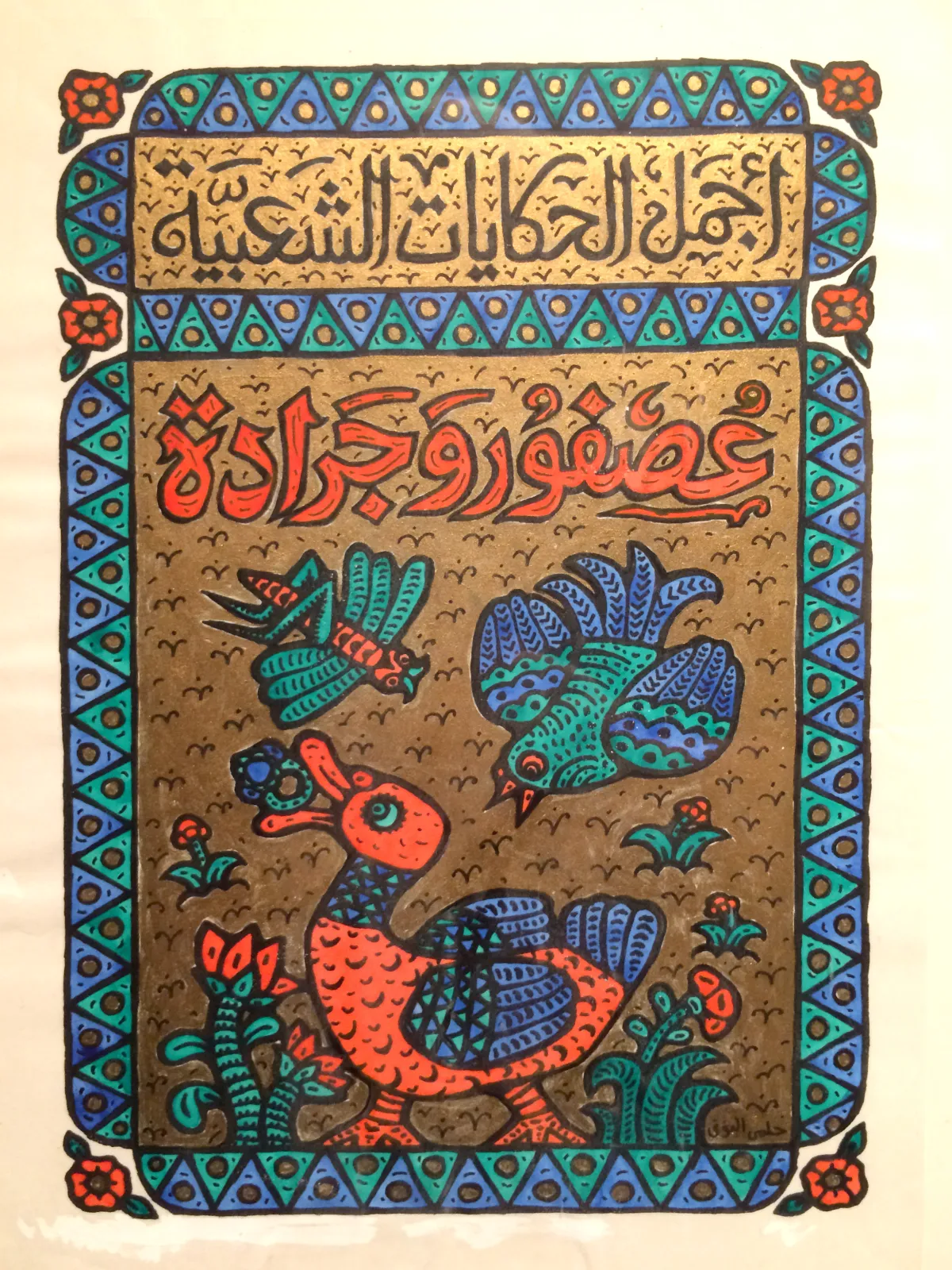Helmi El-Touni: An Icon of Egyptian Folkloric Art
The most straightforward way to remember an artist is through their artistic creations, which serve as their legacy. When it comes to Helmi El Touni, however, remembering his work is akin to remembering one’s own identity — his art is deeply intertwined with Egypt’s culture and history.
When we remember his artwork, we are not just remembering him as an artist, we are also reconnecting with Egypt’s culture.
Last Saturday, Egypt lost a cultural icon: Helmi El-Touni, a leading figure in Egyptian folkloric art. Renowned for pioneering a modern Arab aesthetic that challenged Western-centric designs, he is celebrated for his distinctive oil paintings of Egyptian women as well as his influential children’s book covers and illustrations.
Many Arab homes displayed his illustrated books, even if they were rarely opened. The distinctive covers alone were prized as pieces of art or decorative elements. His book covers for renowned authors like Ihsan Abdel-Quddous and Anis Mansour, along with his illustrations for Hussein Ahmed Amin’s Alf Hekaya w Hekaya (One Thousand and One Tales, 1984) ensured his imagery was a familiar and enduring presence in Arab homes.
He was part of a generation of Egyptian graphic artists who emerged during a time of intense Arab anti-colonial artistic and intellectual enthusiasm, which largely resisted Euro-American aesthetics. His favorite motifs—doves, horses, and Arabic calligraphy—echoed ancient, Coptic and Islamic art as well as grassroots culture.
Remembering a significant cultural legacy involves more than just recalling what he created as an artist; it also means understanding the impact it had.
Here are three ways El-Touni influenced culture and made an impact.
Introduced Egyptian visual themes to children’s books

At the time, all children’s books and magazines in Egypt were illustrated by foreigners. El-Touni, along with Hussein Bikar, were among the first to bring a distinctive and memorable design to Egyptian children’s books.
His innovative use of calligraphy, particularly inspired by the Mamluki Thuluth script, a version of Arabic calligraphy used in Mamluk architecture, set his covers apart.
Many of his children’s book cover illustrations also incorporated elements of Islamic art, especially Islamic architecture, as part of his broader effort to highlight Islamic art as a precursor to European abstraction.
His children’s book covers and stories also focused on folk tales and cultural themes, such as Agmal al-Hikayat al-Shabiyya (Most Beautiful Folk Tales, 2001) and Arrouset Hanan (Hanan’s Doll, 2007), which aimed to teach girls about embracing their identity.
Revolutionized the depiction of rural heritage and rural women

El-Touni once remarked, “Every artist has a set of vocabulary, and for me, the most important is women. I consider myself a supporter of women. I look at them with both sympathy and admiration, and despite the fairness they deserve, they are often treated as if they are a minority.”
From illustrating a woman combing her long black hair to riding a bull, carrying water, or wearing the traditional rural Egyptian galabeya, El-Touni captured the full spectrum of Egyptian women’s daily lives. He highlighted not just their beauty and adornments, but also their everyday routines and rituals.
While his artwork on women is easily recognizable for its consistent artistic elements, such as the wide dark eyes and long dark hair of his female subjects, he was also unafraid to experiment. He depicted women with various hair textures and colors, including curly and blonde hair, and placed them in a diverse range of settings and contexts.
He tackled contemporary social issues and offered political commentary
El-Touni’s designs also captured the human experience, reflecting his perspectives on social and political issues. In 2011, he held a visual exhibition at Zamalek’s Picasso Gallery showcasing Egypt’s evolving political landscape through vibrant folk colors.
His artwork featured various themes, including clowns and young Egyptian girls with the Egyptian flag in the background, each symbolizing different political and social messages. For example, the clown represented the fool—a commentary on the political climate he perceived.
To mark a new era of Egyptian patriotism, El-Touni prominently featured the Egyptian flag in his artworks, often alongside young women and girls—his favorite motif—symbolizing a new kind of life in Egypt.
“I incorporate the flag into my paintings of women and girls in a subtle way to convey our emerging sense of patriotism,” the artist explained.
